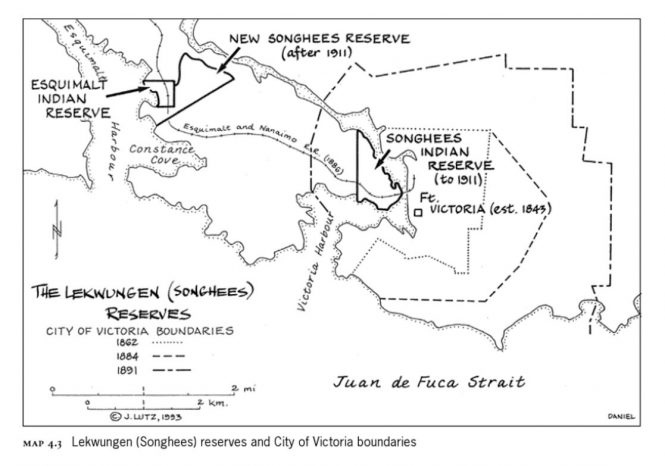Two years following the relocation of the Lekwungen Reserve, the DIA requested that Superintendent of the Department of Indian Affairs, Ditchburn, report on how the Lekwungen were spending the money they had been given as compensation. In 1913, after examining bank accounts, receipts, and conducting interviews, Ditchburn reported back to the DIA stating that, although few had recklessly spent their money, the majority had been spending it extremely well (19% of cash remained on hand; 40% went to the purchase of assets – houses, furniture, horses etc.; 19% was invested; 22% given to relatives or spent elsewhere).[1]
The capital that the Lekwungen gained following the reserve relocation negotiations caused a portion of the population to make an effort to enter into the entrepreneur sector, however, many continued working in their customary areas of expertise (hunting, gathering, and in the fisheries).[2] Therefore, despite the increased capital possessed by the Lekwungen, when new fishing regulations were imposed on Indigenous peoples in 1913 that prevented them from acquiring independent fishing licenses and forced upon them “cannery licenses” (which we exponentially less lucrative), the economic stability of Lekwungen men and women was jeopardized.[3] Additionally, due to the depression that occurred in 1914, many labourers became unemployed and were unable to find work outside of the reserve due to the refusal of caucasian labourers to working alongside Indigenous men.[4]

